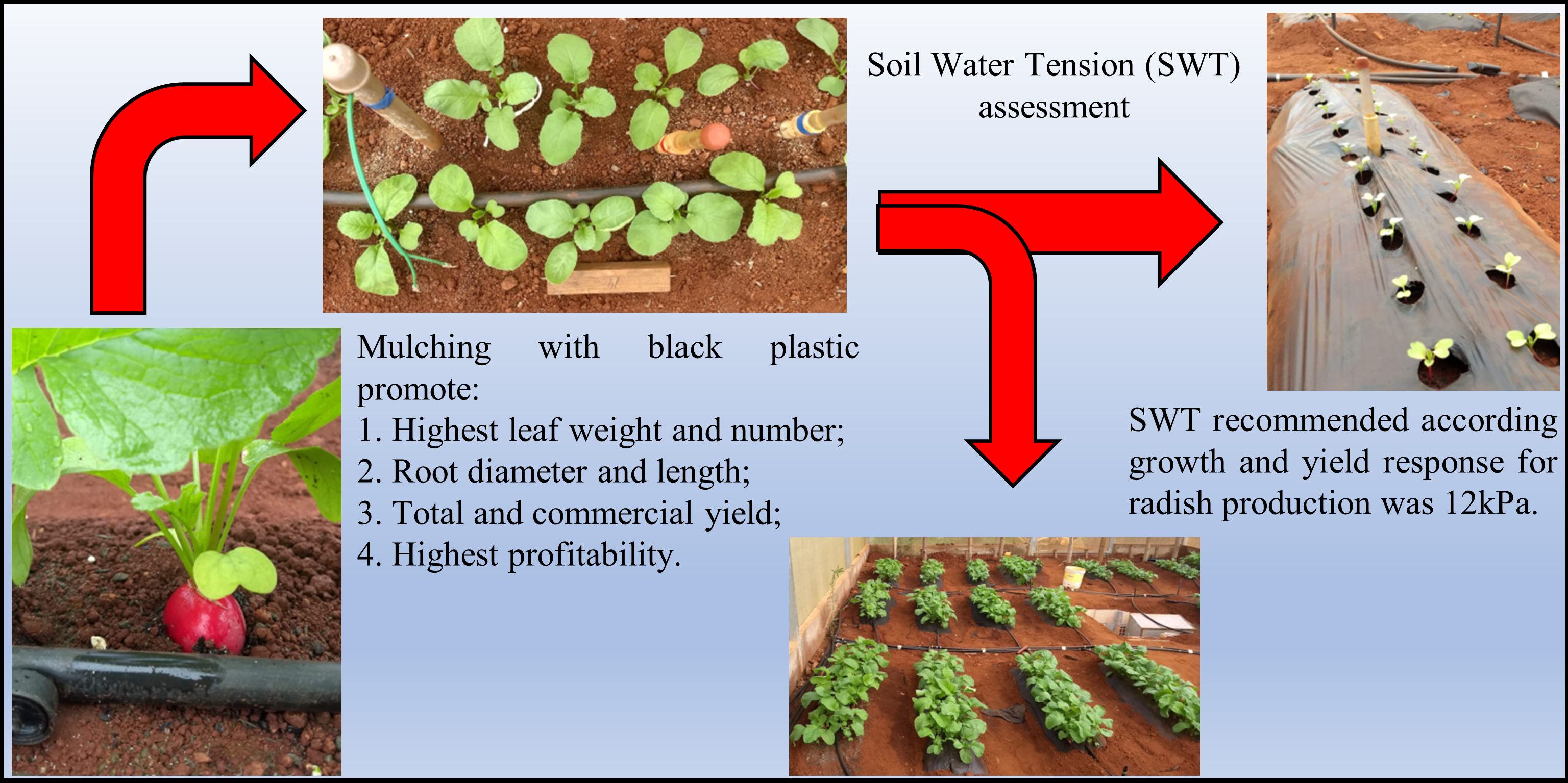Economic viability and development of radish (Raphanus sativus L.) under different soil water tensions and mulching types

Published 2022-08-24
Keywords
- Growth traits,
- irrigation management,
- mulch system,
- production cost
How to Cite
Abstract
There is a lack of information on the production of irrigated radish associated with the use of mulching and on the economic viability of these production technologies. The objective of this study was to evaluate the growth, yield, and economic viability of the radish crop under different soil water tensions (SWT) and mulching types. The experiment was conducted in a greenhouse. During the experiment, the following variables were evaluates: growth parameters, yield and economic viability. SWT at 7 kpa in the treatments without mulching and at 12 kPa in the treatments with black plastic and black non-woven resulted in higher growth parameters and yield. The leaf area index and the root diameter were the parameters that had a high and positive correlation with yield. Expenses with variable resources represent on average 75% of the total production cost. Therefore, the investment pays all resources applied in the activity and provides an economic profit. In this context, the higher radish yield with 37.5 t ha-1 provided the highest profitability of the evaluated treatments, thus, for radish production, the recommendation is to use 12 kPa as an indicator of the moment for irrigation, associated with the use of black plastic.





